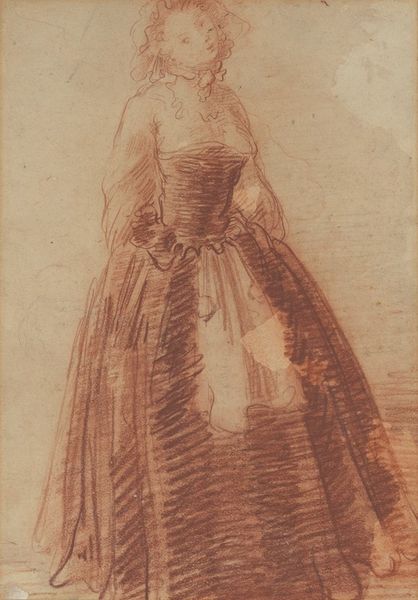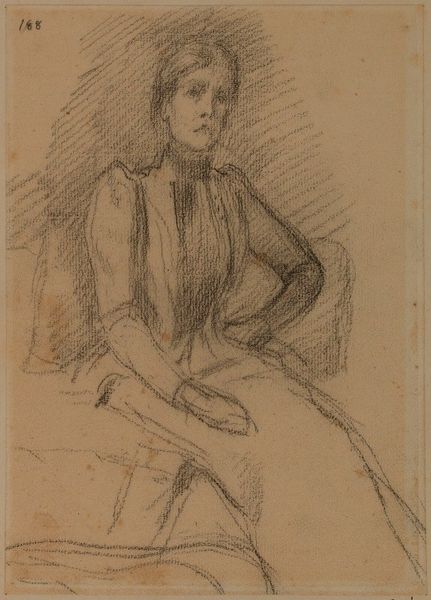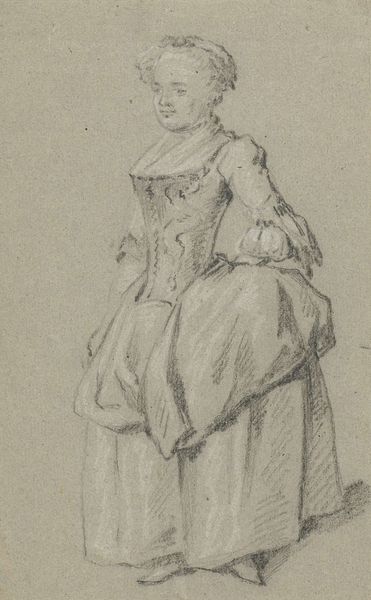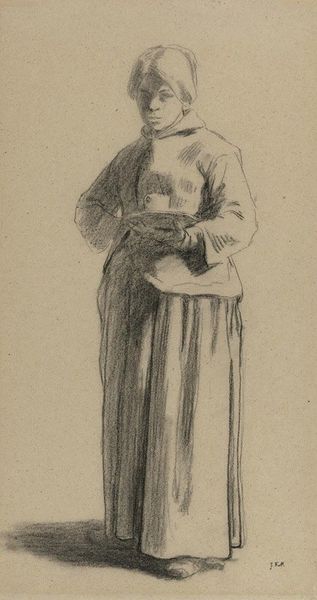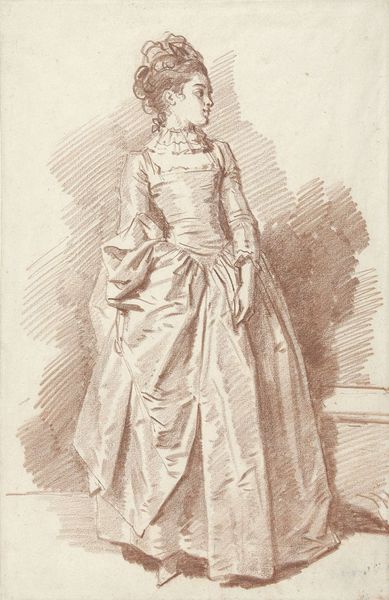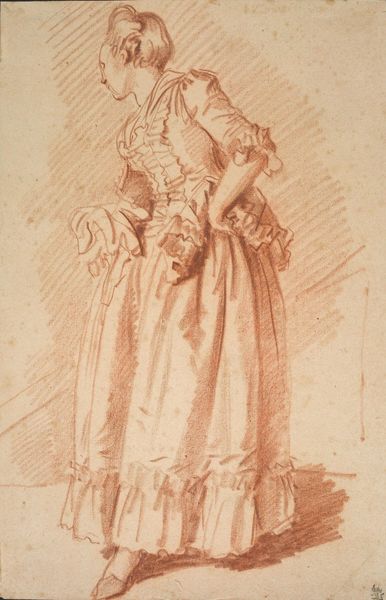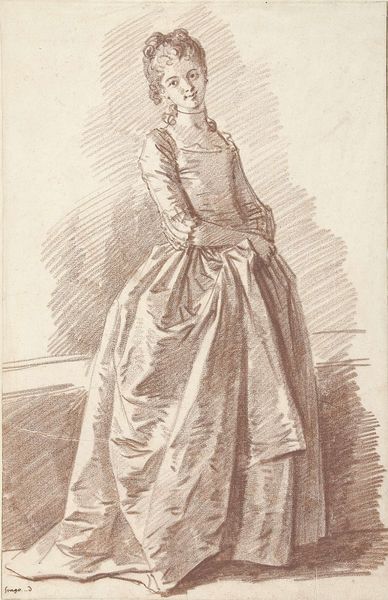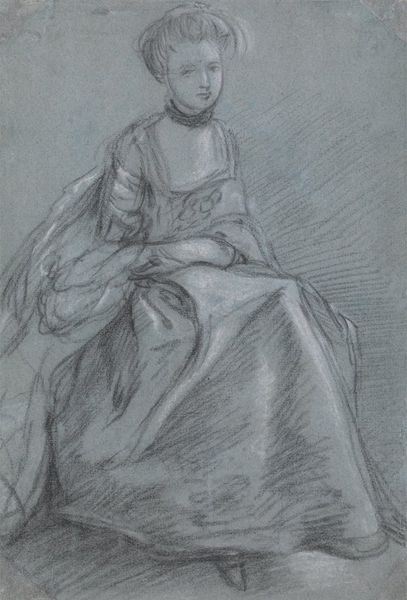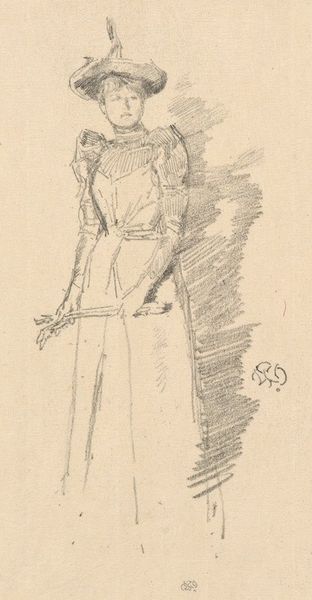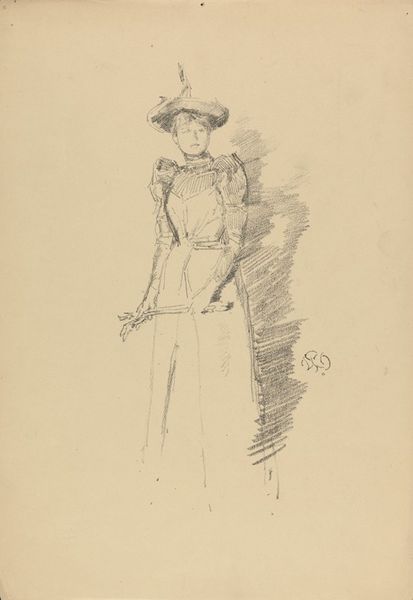
Copyright: Public Domain: Artvee
Curator: This is Peder Severin Krøyer's "Portrait of Frederikke Tuxen," created in 1882, employing charcoal and pencil. What are your initial thoughts on this piece? Editor: The immediate impression is one of restrained elegance. It’s a poised figure, almost serene, but with a certain melancholy hinted at in her eyes. The limited palette really focuses attention on her expression. Curator: Indeed. Krøyer was a master of capturing nuances. What’s compelling is the way he positions Frederikke within the context of artistic circles of the time; as the wife of another artist, Michael Ancher, her portrayal reflects both personal connection and the artistic milieu in which they moved. Editor: I’m also struck by the social dynamic; a female artist's wife, herself perhaps with artistic aspirations that may be subjugated. Her garments, beautiful but restrictive, might also serve as a symbol of social confinement of upper-middle class women. Does her gaze suggest compliance or resistance? Curator: It's an interesting tension. Krøyer was undoubtedly part of the establishment, but his technique - the very visible charcoal lines, the unfinished quality - hints at a subtle break from purely academic portraiture. The institutional support was there but he also experiments a little. Editor: Absolutely. This piece brings to mind the Pre-Raphaelite Brotherhood's fascination with female subjects but this does so without idealizing Frederikke, making it relatable and genuine. Do we know the history surrounding this piece and other representations of the artist's wife? Curator: Certainly. Frederikke features in a range of paintings and drawings, so tracing those connections will yield fascinating results regarding Krøyer's representation of women and femininity. This allows to examine themes related to public life and marriage. Editor: Right. It makes this portrait not merely a representation of an individual but rather an exploration into the construction of identity within a patriarchal society and how someone like her navigated artistic relationships and their place in history. Curator: I agree. There's something intensely personal yet widely symbolic in Krøyer's study here that still invites interpretation. Editor: It reminds us how looking at art, particularly portraits, pushes us to explore layers of experience, identity, and gender within historical narratives. The silences speak louder here than the lines of the dress. Curator: Exactly. And hopefully encourages our audience to continue pondering Frederikke's perspective and her unrecorded contributions.
Comments
No comments
Be the first to comment and join the conversation on the ultimate creative platform.
